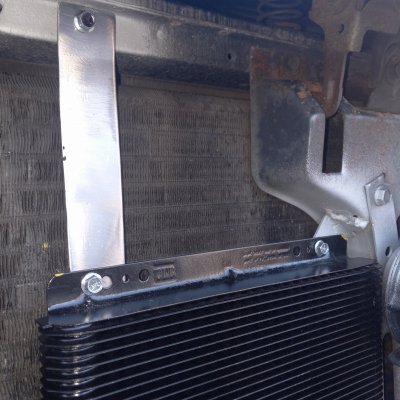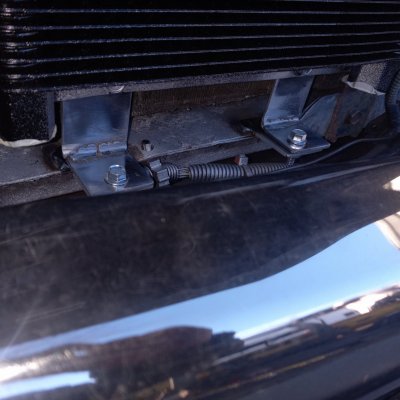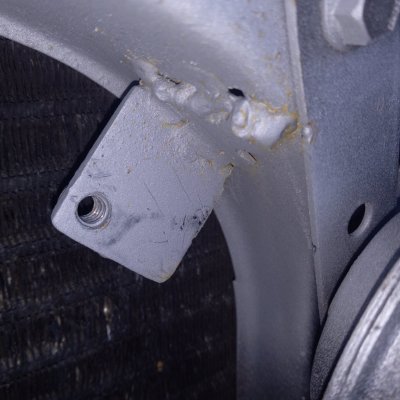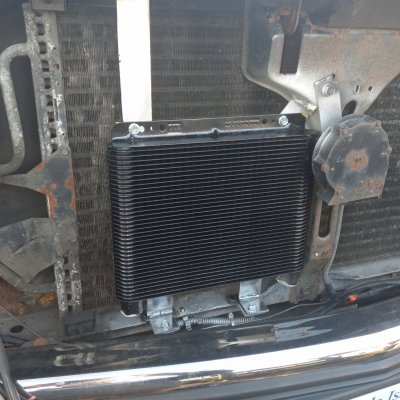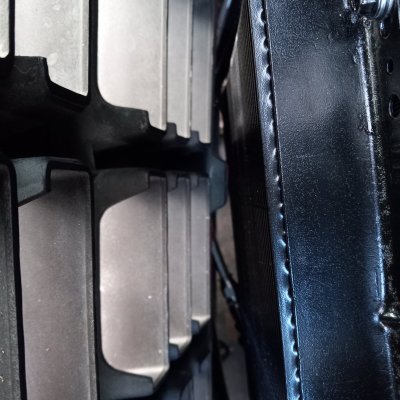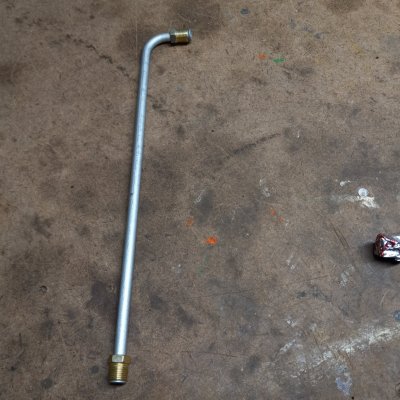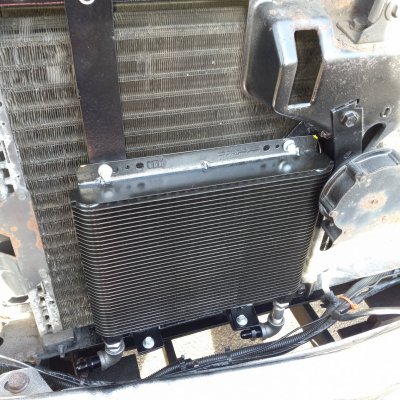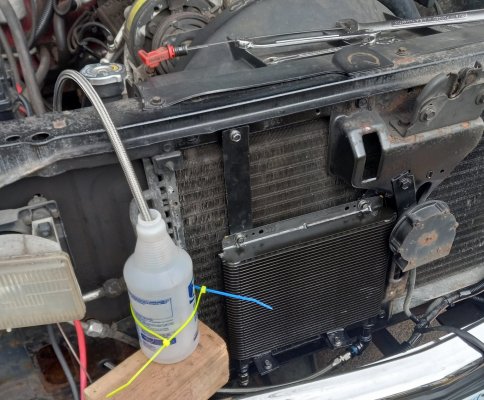Kens1990K2500
One Piece At A Time
I recently put a snow plow on my truck, and before I began plowing, I wanted to install an auxiliary transmission cooler. I read a recent thread from another forum member, who used all GM factory parts. After doing some research, I decided to use a different approach.
For the cooler, I chose a Tru-Cool M7B. Since I have a plasma cutter and MIG welder, I ended up fabricating my own mounting brackets, which was the most time-consuming part of the project. After removing the grille, the next step was cleaning and straightening the fins on the AC condenser, to maximize air flow. Once I decided where I wanted to place the cooler, I welded one of the upper brackets to the center support, near the horn (being careful that the cooler didn't interfere with the horn). I decided to tack weld a nut to the backside of the bracket, to make mounting the cooler easier by not having to fumble with the nuts (I ended up doing it with the other brackets - worked like a charm). The other upper bracket, on the left side, was easier, since it's a straight shot. I welded a nut to the radiator support.
For the lower brackets, I made two angle brackets, and welded two tabs to the bottom of the radiator support. This makes the cooler easy to remove if I should need to replace the AC condenser in the future.
One minor snag: when I went to test-fit the grille to check for interference, I found that a tab inside the grill was interfering with the cooler. I simply cut the tab off, and all was well.
With the cooler mounted, it's time to plumb ...
For the cooler, I chose a Tru-Cool M7B. Since I have a plasma cutter and MIG welder, I ended up fabricating my own mounting brackets, which was the most time-consuming part of the project. After removing the grille, the next step was cleaning and straightening the fins on the AC condenser, to maximize air flow. Once I decided where I wanted to place the cooler, I welded one of the upper brackets to the center support, near the horn (being careful that the cooler didn't interfere with the horn). I decided to tack weld a nut to the backside of the bracket, to make mounting the cooler easier by not having to fumble with the nuts (I ended up doing it with the other brackets - worked like a charm). The other upper bracket, on the left side, was easier, since it's a straight shot. I welded a nut to the radiator support.
For the lower brackets, I made two angle brackets, and welded two tabs to the bottom of the radiator support. This makes the cooler easy to remove if I should need to replace the AC condenser in the future.
One minor snag: when I went to test-fit the grille to check for interference, I found that a tab inside the grill was interfering with the cooler. I simply cut the tab off, and all was well.
With the cooler mounted, it's time to plumb ...
Attachments
Last edited:


